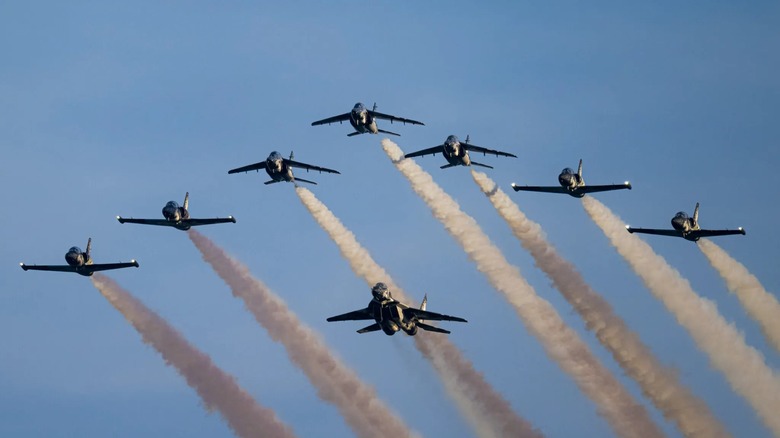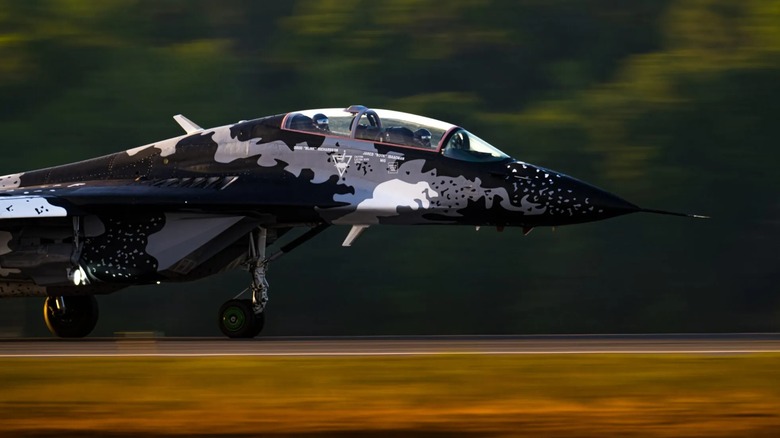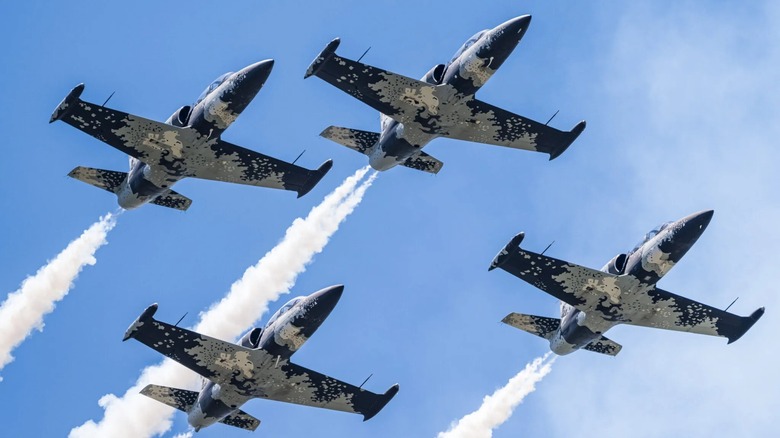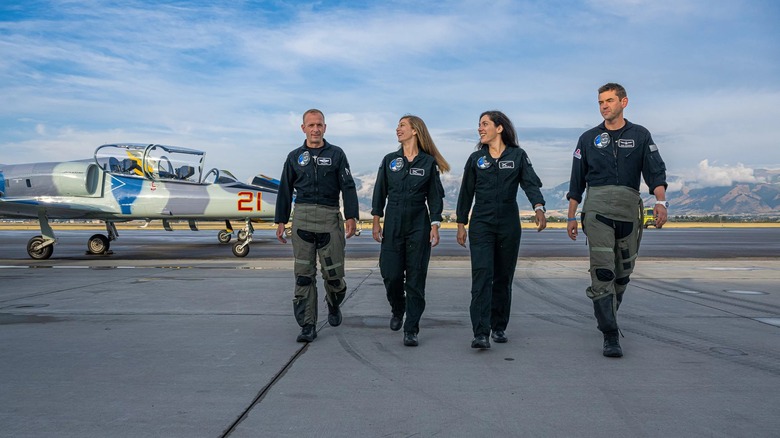What Kind Of Planes Are The Polaris Ghost Squadron Jets?
The Polaris Program is a commercial space flight initiative ran by businessman and commercial pilot and astronaut Jared Isaacman. Polaris Dawn, the first of the three proposed space flights with commercial astronauts, is slated to launch in the summer of 2024 onboard a SpaceX Crew Dragon capsule. Ahead of the planned five-day orbit, Isaacman is busy promoting the mission at various commercial and enthusiast air shows across the U.S., with spectacular and stunningly precise aerial maneuvers from the special Polaris Ghost Squadron Jets.
According to Polaris, the Ghost Squadron offers astronauts from the upcoming Polaris Dawn space mission, and crew from similar initiatives, the training to prepare for the extreme conditions of space travel. The aerobatics they undertake subject astronauts to high-G scenarios and hyper-accelerated movements to strengthen them for escape velocity.
The squadron's mission, according to Polaris, is to use precision flying routines to "inspire the next generation of aerospace enthusiasts." The proceeds from these air show participations are donated to St. Jude's Children's Research Hospital.
A MiG-29 headlines the show
Earlier in May 2024, the Polaris Ghost Squadron exhibited its skills at the Air Dot Show in Fort Lauderdale. This was the second performance of 2024, following the Sun N Fun Aerospace Expo in Lakeland, Florida, last month. In the coming months of 2024, the group is slated to participate in at least three more air shows in the U.S.
The Ghost Squadron's fleet of jets with grayscale camouflage paint job comprises eight jets. The headliner of this formation is a MiG-29, which is owned by Isaacman and is one of only a few privately owned MiG-29 jets in the world.
Notably, the MiG-29, formally known as the Mikoyan MiG-29 and nicknamed Fulcrum, is one of the most iconic fighter jets ever deployed. It was developed by the Soviet Union in the 1970s to secure the air during the Cold War and was first put in to service in 1982. It remains operational today in different nation's air force and navy fleets other than Russia's, with various modifications. Perfectly capable of breaching the sonic barrier, the MiG-29 can reach a speed of up to 1,500 miles per hour and reach a ceiling of about 59,000 feet.
Subsonic jets grace the formation
The Ghost Squadron also includes three Alpha Jets. Produced in a joint collaboration between France's Dassault and Germany's Dornier and first put into service in 1979, Alpha Jets are primarily deployed for training and tactical support. In addition to France and Germany, the aircraft has served the air forces of several other nations, including Belgium, Egypt, Morocco, and more. The Alpha Jet flies at subsonic speeds, with a maximum of roughly 621 miles per hour, and can reach an altitude of up to 50,000 feet.
Apart from the MiG-29 and the Alpha Jets, the fleet also includes four L-39 Albatros jets designed and manufactured by Aero Vodochody in the Czech Republic. The L-39 is a single-engine subsonic aircraft with several variations used for light combat, ground support, and training. With almost 3,000 units produced and used by air forces and militaries from over 40 countries, it is widely appreciated by various aerobatics teams in the world for its agility.
What is Polaris up to with its space mission?
Besides the blisteringly fast and magnificent maneuvres at the Fort Lauderdale Air Show earlier this month, the Ghost Squadron gained attention for a close call between two of its jets. During the incident, the flying tips from two of the four L-39 jets flying a diamond formation made slight contact. The incident, which could have easily resulted in a fatal crash, ended with minor damage to the tips of one of the aircrafts after the pilots instantly disengaged from the formation as per protocol.
The Air Show released an official statement confirming that both jets landed safely and the pilots walked out unharmed. The incident was caught on camera and can be seen in the video below:
Coming back to the Polaris Program, the Polaris Dawn spaceflight is set to take off sometime in the summer of 2024. The crew for the program includes Isaacman as the flight commander, former U.S. Air Force pilot Scott Poteet as the mission pilot, and SpaceX lead operations engineers Sarah Gillis and Anna Menon as the mission specialists.
Despite its promise to launch in 2024, the current flight schedule of the five-day space mission remains unclear after several delays from the original launch date of 2022 due to a lack of the hardware's readiness, especially the space suits intended for the first commercial spacewalks. Two successive missions are lined up, but the timelines have yet to be disclosed and probably depend on the first mission's success.



